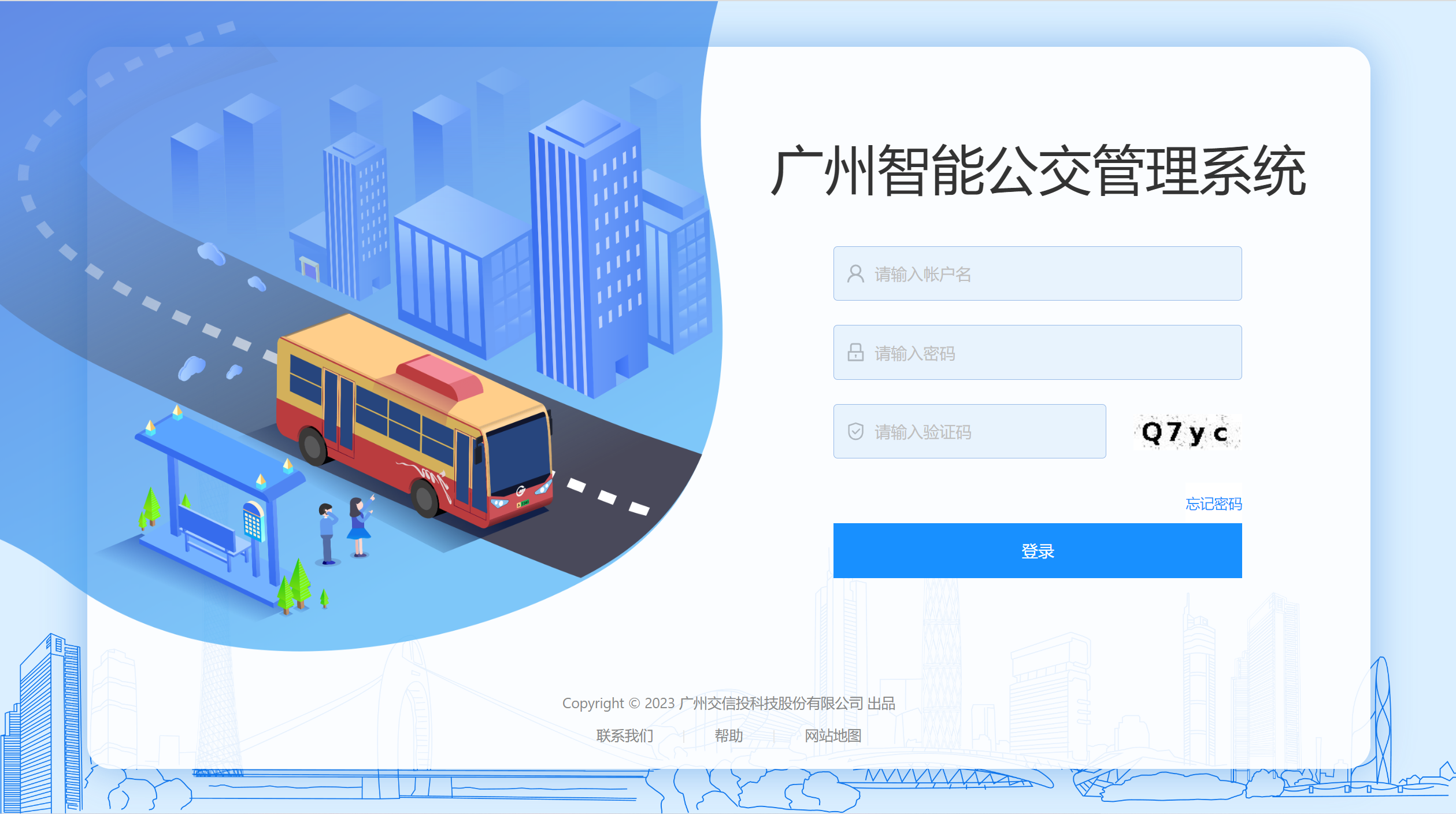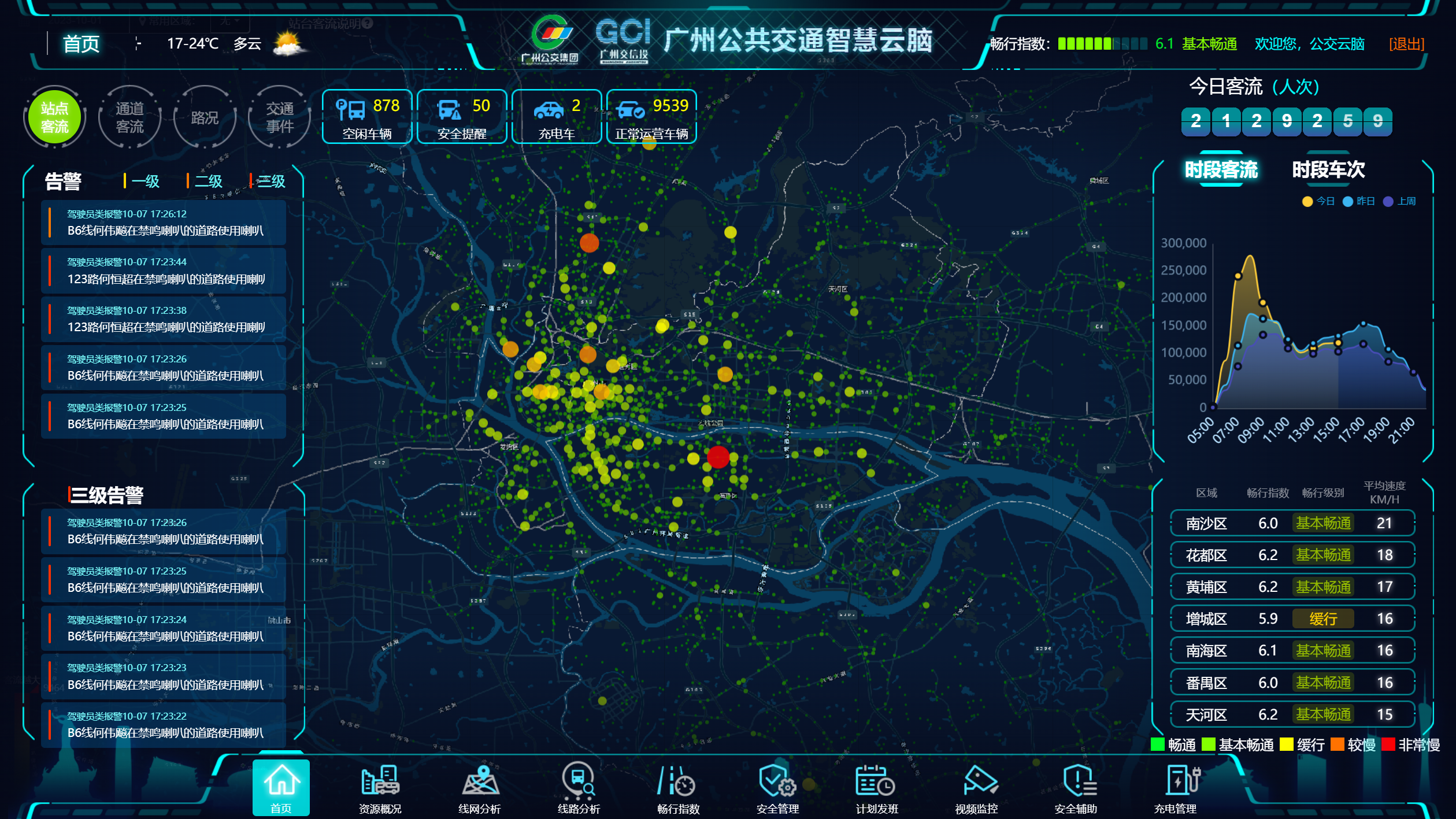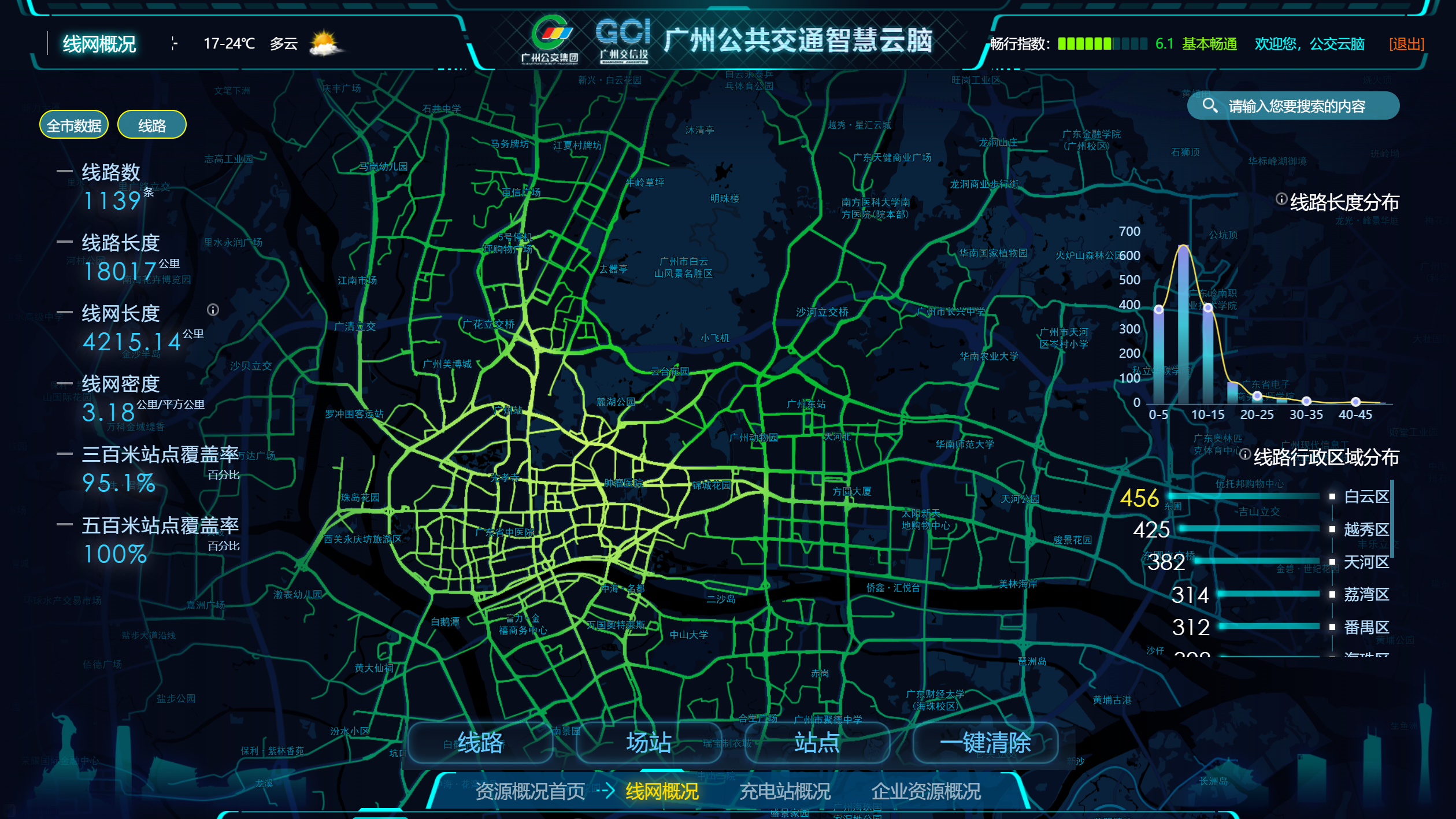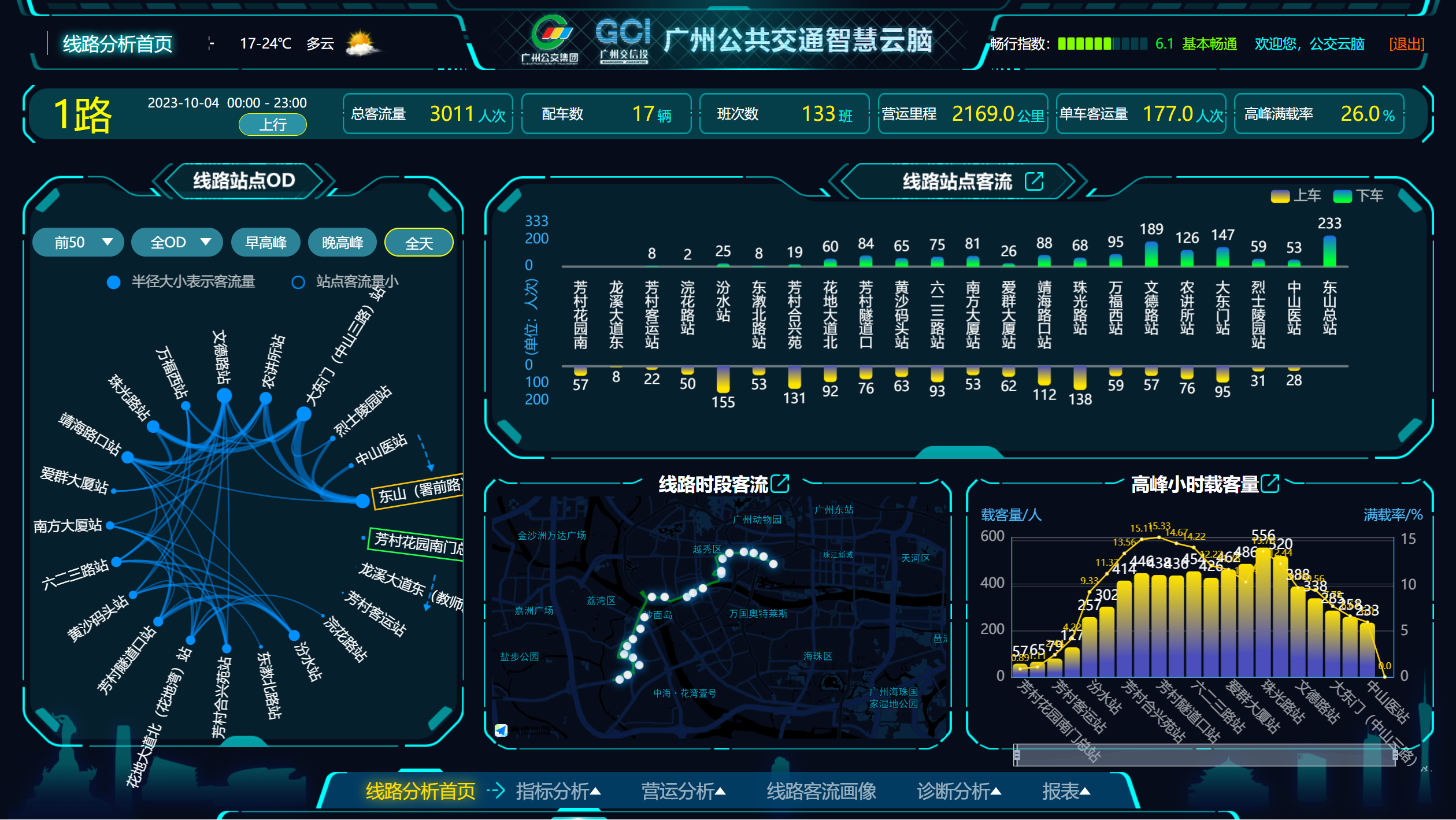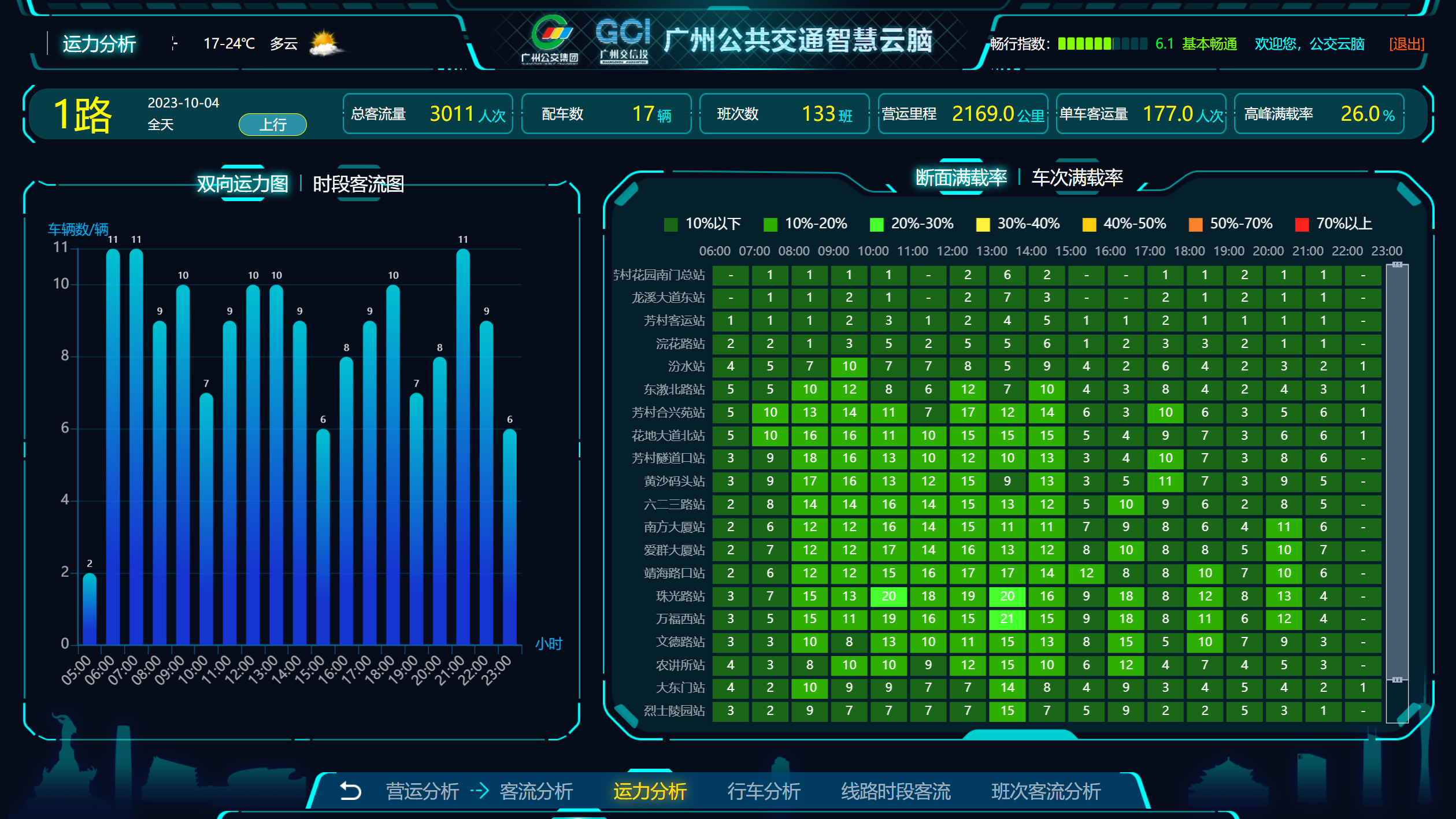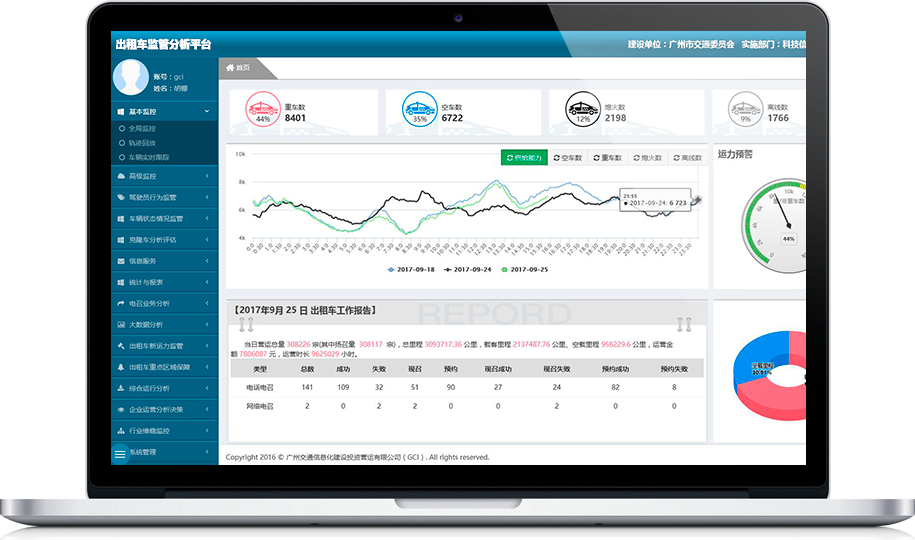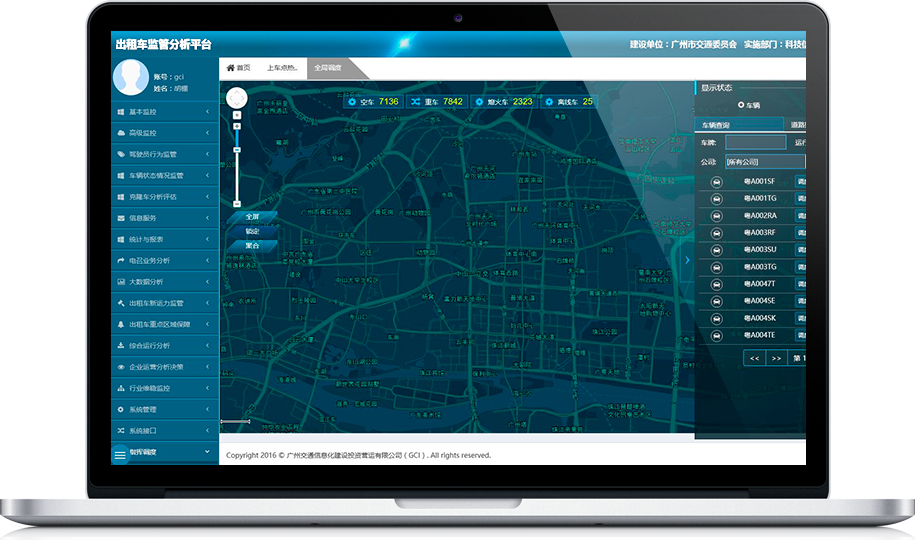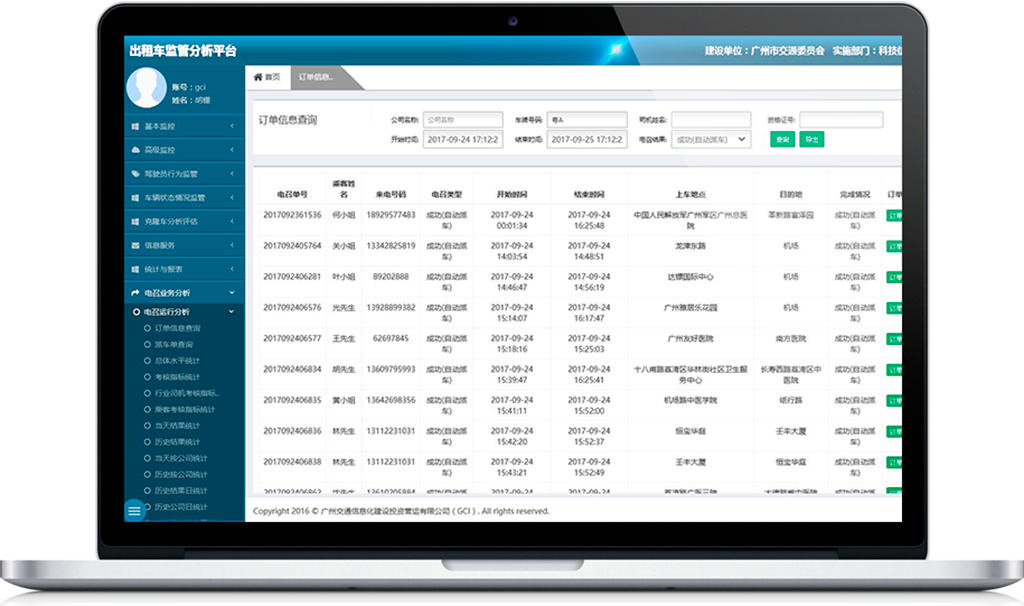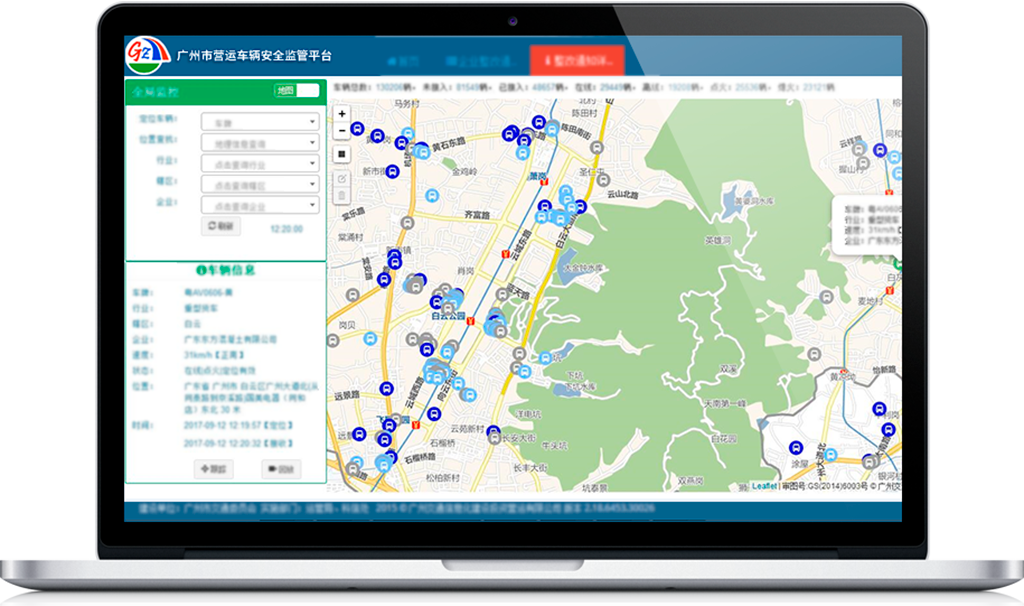
System Overview
The public transportation industry regulatory system employs real-time monitoring of buses and data exchange with the bus operation center to gather information on the operational status, revenue from routes, and efficiency of the bus enterprise. Furthermore, it utilizes GPS data, schedule information, and operational data to regulate and assess the service quality and safe operation ability of the bus companies. The system is designed with the criteria of practicality, stability, advancement, reliability, and long-term development, reinforcing the concept of scientific decision-making and fully embodying the design principles of modular system integration to meet the needs of government regulation, enterprise operation dispatch, and serving the public.
The system improves the public transportation industry's basic resource database, establishes a routine mechanism for collecting and processing dynamic information in the industry, and promptly grasps relevant industry dynamics.
-
Basic Data Query
Basic Data Query
The system realizes queries for bus routes list, stations list, and the first and last departure times of a route.
-
GIS-based Bus Vehicle Monitoring
GIS-based Bus Vehicle Monitoring
Based on a GIS platform, the system realizes real-time display of vehicle location, vehicle direction, and other information on the monitoring map. It supports vehicle positioning queries and trajectory playback functions. Additionally, users can open multiple monitoring windows to track different targets or areas, and display relevant information of the targets such as vehicle number, speed, and direction.
-
Regulation of Public Transit Service Quality
Regulation of Public Transit Service Quality
Regulation of public transit service quality is conducted through monitoring indicators such as punctuality rate of first and last buses, violation rate of departures from scheduled times, violation rate of departure intervals, and rate of driver adherence to designated routes.
-
Surveillance of Safe Operations
Surveillance of Safe Operations
Monitoring of vehicle speeding behavior and vehicle alarm information.
-
Comprehensive analysis and consolidation of vehicle operational data
Comprehensive analysis and consolidation of vehicle operational data
Monitoring, querying, and comprehensive analysis of daily vehicle scheduling and feedback information from public transportation company's dispatch.
-
运营监控
运营监控
实现日常调度信息监控、日常调度信息查询、电子路单统计等功能。
-
线路客流分析
线路客流分析
分析线路、线路组合及企业的客流日/周规律,以及各种发班类型的客流规律,可进行多日对比、日期段对比,以图表展示并可导出Excel。
-
线路发班分析
线路发班分析
线路组合发班日/周规律分析、线路发班日/周规律分析、企业发班日/周规律分析、线路组合发班多日对比分析、线路发班多日对比分析、线路组合发班日期段对比分析、线路发班日期段对比分析、企业日均发班类型分析、线路日均发班类型分析。
-
发班客流匹配
发班客流匹配
线路客流运能匹配分析、线路发班日/周规律客流匹配分析、线路组合发班日/周规律客流匹配分析、线路发班日/周规律客流匹配分析、企业发班日/周规律客流匹配分析。
-
站点客流分析
站点客流分析
按道路、线路、站点组分析站点上下车的客流日/周规律,按站点分析其停靠线路的客流日/周规律,可进行多日对比、日期段对比,以图表展示并可导出Excel。
-
运营速度分析
运营速度分析
分析线路、线路组合及企业的运营速度周规律、日规律,可进行多日对比、日期段对比,以图表展示并导出Excel。
-
运营里程分析
运营里程分析
载客里程报表、空驶里程报表、其它里程报表分析。支持报表生成文本导出、报表接口导出。
-
运营里程审核
运营里程审核
系统根据线路的调整,自动生成站点间里程。线路调整类型包括新建线路、增加站点、减少站点、线路改道、总站调整等。
-
运营里程申诉
运营里程申诉
线路里程审核后,无效路单将自动进入申诉窗口,按公司线路分别显示,公交公司可以在规定时间内对相关路单提起申诉。
Efficient comprehensive monitoring
Effortlessly conduct unified operational monitoring of the public transportation industry, encompassing business order, service quality, safety, and operational efficiency. Supervise the daily operations of the city's public transportation system, gaining insights into key routes, important stops, and pivotal terminals throughout the city.
Refined management
Obtain a comprehensive understanding of the current development status of the city's public transportation sector. By gathering information on public transportation staff, vehicles, route networks, and passenger flows from all districts, establish a centralized public transportation data center that serves as the foundation for various functionalities of the intelligent public transportation management system. Collect data on vehicle dispatching and operational statistics for all public transportation routes in the city, allowing for an assessment of the overall capacity matching situation of urban public transportation through the analysis of intelligent transportation data.
Groundbreaking achievement
Attain a comprehensive understanding of the scheduling plans of various public transportation enterprises.
Enhance the service quality of the public transportation industry.
Optimize the operation of bus routes.
Assist in the precise calculation of subsidies for public transportation.
